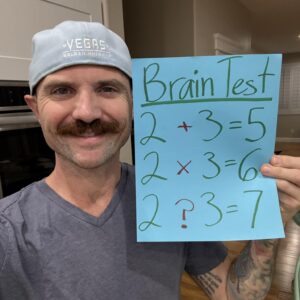In the stillness of dawn, a mother stood motionless, her heart pounding as she watched her eldest son cradle his baby brother with trembling arms. His whisper cut through the quiet: “I have to protect him, Mom. They said he might be taken away.” The mother froze, fear and confusion rising within her. When she gently asked who had told him such a thing, his answer came in a voice filled with both innocence and dread — “The people in my dreams.”
He explained how, night after night, shadowy figures had warned him that his baby brother was in danger. The fear had become so vivid that he woke before sunrise to stand guard beside the crib. Tears filled his eyes as he whispered, “If I don’t watch him, he’ll disappear.” Though the mother reassured him that dreams could feel real but held no power, she saw the depth of his worry — and understood that comfort alone wouldn’t be enough. This was a fear that needed compassion, not correction.
When the father returned home, the family gathered in the living room for a quiet talk. They spoke gently about dreams and how the mind can weave stories out of worry. Together, they found small ways to bring him peace — letting him help with feedings, rocking the baby to sleep, and keeping a soft nightlight glowing in his room. Slowly, the tension began to ease, and the little boy started to smile again, his protectiveness turning into gentle care instead of fear.
As the weeks passed, the early-morning vigils faded, replaced by laughter and shared games. What began as a nightmare transformed into a deeper bond between two brothers — one forged through love, not fear. The parents realized something quietly profound: when a child’s fears are met with understanding instead of dismissal, healing follows. In that home, peace didn’t come from silence, but from love that listened.




